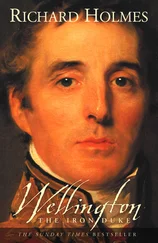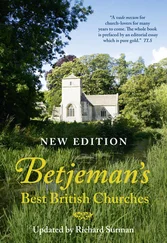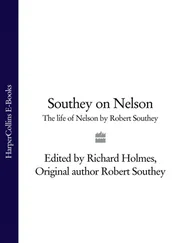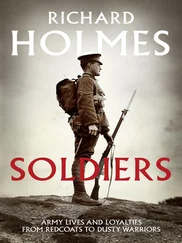I have chosen to start my narrative proper in 1750, just before the first major battles which gave the British control of Bengal, and on the eve of the arrival in India of large formed bodies of British infantry. I have selected 1914 as my cut-off date for a variety of reasons. While dates rarely mark abrupt historical watersheds (and in many ways the India of 1920 had very much in common with the India of 1910), the experience of the First World War marked British and Indian soldiers alike; the Indianisation of the Indian army was fast becoming a major military policy issue; and popular historiography, its trail blazed by Charles Allen’s Plain Tales from the Raj, is at its strongest for the period 1914–47. Much as I would like to consider the experience of the British soldier in India over this latter period, this is not the book in which to do it.
As Colonel Henry Yule and Dr A. C. Burnell tell us in Hobson-Jobson, that glossary of Anglo-Indian words which no historian should be without, ‘sahib’ was ‘the title by which … European gentlemen, and it may be said Europeans generally, are addressed, and spoken of, when no disrespect is intended, by natives’. It was affixed to the name or office, ‘corresponding thus rather to Monsieur than to Mr’, to produce Colonel Sahib, Collector Sahib, Lord Sahib and even Sergeant Sahib. Its usage extended to non-Europeans. It could be used as a specific title: Tipu, Sultan of Mysore, killed when the British stormed his fortress of Seringapatam in 1799, was sometimes spoken of as Tipu Sahib. It was widely affixed to the titles of men of rank, such as Khan sahib, Nawab sahib, or Raja sahib, and British officers, speaking to Indian officers, added it as an honorific, as in Subadar Major sahib. 6
The title ‘sahib’ could be casually granted or hard won. Civil servant Walter Lawrence had to supervise the hanging of ‘a burly, wild-looking Pathan’ who had confessed to murder but maintained that his young accomplice was innocent. Lawrence tried to get the youngster’s sentence reduced, but failed. ‘I do not think you are faithless,’ said the Pathan, ‘and I will make one more appeal to you. I am kotwal [a policeman or magistrate] in my village, and my enemies will ask the government to sequestrate my land, and my daughter will be landless and lost.’ Lawrence was able to ensure that the daughter would inherit, and on the day of the hanging he saw ‘a pretty girl of about fourteen years, who made a graceful obeisance of farewell to her father and of thanks to me’. 7He was a sahib again.
The word sahib went even farther. The common suffix log (meaning people) was used to produce baba-log for children, bandar-log for the monkeys in Kipling’s Jungle Book or the insulting budmash-log for ruffians or villains (shaitan-log the devil’s people, was even worse, so bad that a distinguished relative of mine thought it applicable to successive governments), and gave sahib-log, which might also be used to describe European gentry. This was a more polite word than gora-log, used to mean Europeans in general or, as Yule and Burnell would have it, ‘any European who is not a sahib’. 8The term could be used as a deliberate insult, and more than one Indian who died on the scaffold during the suppression of the Mutiny, bravely told the gora-log exactly what he thought of them. Adding pucka (from the Hindustani for ripe, mature, cooked) gave pucka sahib, which still does duty in old-fashioned colloquial English to mean a proper gentleman. 9The prefix mem gave memsahib, the term for a European lady, although as late as the 1880s this was generally used only in the Bengal presidency. Madam Sahib was the Bombay version, and doresani, from doray, the South Indian equivalent of sahib, was popular in Madras.
For the purposes of this book sahib is used in its broadest sense to mean all British soldiers serving in India, from sahib-log of the most refined sort, to gora-log, red of face and coat, intent on mischief in the bazaar. This account is firmly based on their own writings, in the form of letters home and diaries – a respectable stream of which is preserved in the Oriental and India Office Collections of the British Library and the National Army Museum. As far as printed sources are concerned, in addition to examining such well-known accounts as Frederick Roberts’s Forty-One Years in India and Garnet Wolseley’s The Story of a Soldier’s Life, I was able, thanks largely to that wonderful repository of the long-forgotten, the Prince Consort Library in Aldershot, to use far scarcer memoirs such as W. G. Osborne’s The Court and Camp of Runjeet Singh and James Wood’s Gunner at Large. There are fewer accounts here by private soldiers and NCOs than I would have wished, but Privates Waterfield and Ryder carry their muskets with HM’s 32nd Foot, and Sergeant John Pearman plies his sabre with HM’s 3rd Light Dragoons. I have also included the experiences of the men’s families – the women who followed them from camp to camp, bore their children, nursed them as they died, and all too often died themselves. The inimitable John Shipp, twice commissioned from the ranks, makes his appearance, and that staunch freemason, Sergeant Major George Carter, tells of life in 2nd Bengal Fusiliers. We also have Subadar Sita Ram – who served with a regiment of the Bengal Native Infantry in the first half of the nineteenth century – on hand to give us his own view of the British army in India:
There were eight English officers in my regiment, and the Captain of my company was a real sahib – just as I had imagined all sahibs to be. His name was ‘Burrumpeel’. He was six feet three inches tall, his chest was as broad as the monkey god’s, and he was tremendously strong. He often used to wrestle with the sepoys and won universal admiration when he was in the wrestling arena. He had learnt all the throws and no sepoy could defeat him. This officer was always known amongst ourselves as the ‘Wrestler’. Nearly all our officers had nicknames by which we knew them. One was the ‘Prince’ sahib, and another was known as the ‘Camel’ because he had a long neck. Another we called ‘Damn’ sahib because he always said that word when he gave an order. 10
Three categories of British soldiers served in India. Firstly, there were what we might now call mercenaries, serving Indian rulers in the eighteenth and early nineteenth centuries, although the term mercenary then had few of its modern pejorative connotations, and ‘soldiers of fortune’ would be a kinder description. Next, there were officers and NCOs of the East India Company’s native regiments, and officers, NCOs and men of the Company’s Europeans, regiments such as the Bengal Fusiliers and the Bengal Horse Artillery. All of these folk had made a conscious decision to serve in India, though many of them lived to regret it: the diarist and sybarite William Hickey no sooner arrived there as a junior officer in the Company’s service than he set off back to England only to reappear in India as a civilian, less trammelled by rules and regulations.
Finally there were regiments of the British army, horse and foot, who served in India for terms ranging from a few years to more than twenty-five. To distinguish them from local units they bore the prefix HM’s in front of their regimental number – such as HM’s 31st and HM’s 50th who fought so hard in the wars against the Sikhs in 1845–46 and 1848–49. Some of their officers had often deliberately exchanged into regiments that were bound for India, where living was cheap and rich pickings beckoned, eighteenth-century India being known, after a coin long current in the south, as ‘the land of the pagoda tree’, which simply had to be shaken to rain money.
Читать дальше












